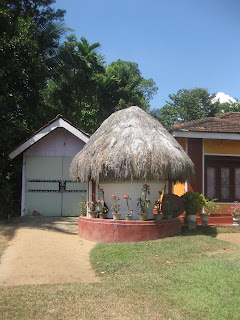Excerpt from the FAO on Wee Bissae
- The paddy seeds were stored for next year's crop in closely woven large cane baskets (Wee bissae). Storage bins called ‘Atuwa’ were made of strong hardwood obtained from Jack tree (Artocarpus heterophyllus) for large quantities. In the home of a farmer (Anamaduwa area), an about three meters high traditional seed storage bin (“Bissae”) was kept in the courtyard. It was made of closely woven bamboo, with a protective cover of clay with cowdung (“Goma Meti”), to insulate it against the external temperature and humidity variations and against the growth of various saprophytic fungi and insects. The dried seeds were mixed with Neem (‘Kohamba’) leaves for added protection against harmful insects. A small thatch covered the bin, which was kept on a wooden base, about a meter high. This bin could store 85 bushels (45 bags) of paddy.
- Such traditional paddy storage bins have almost gone out of use. The paddy is now kept in bags made of waterproof synthetic material, which are usually stored within the home. The paddy bags are also being stored under large tailored waterproof tarpaulin housing.












